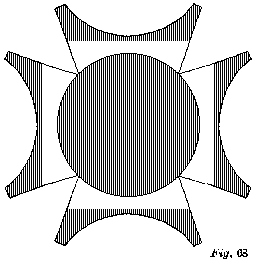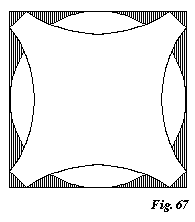DECORATION XXVII. CORNICE AND CAPITAL 385
angle of a four-sided abacus, whose hollow sides fall back behind the bell, and have generally a rosette or other ornament in their centres. The mediæval 
§ 44. The lowest capital in Plate 18 is from St. Mark’s, and singular in having double spurs; it is therefore to be compared with the doubly spurred base, also from St. Mark’s, in Plate 11. In other respects it is a good example of the union of breadth of mass with subtlety of curvature, which characterises nearly all the spurred capitals of the convex 
§ 45. I shall not here farther exemplify the conditions of the treatment of the spur, because I am afraid of confusing the reader’s mind, and diminishing the distinctness of his conception of the differences between the two great orders, which it has been my principal object to develop throughout this chapter. If all my readers lived in London, I could at once fix this difference in their minds by
IX. 2 B
[Version 0.04: March 2008]